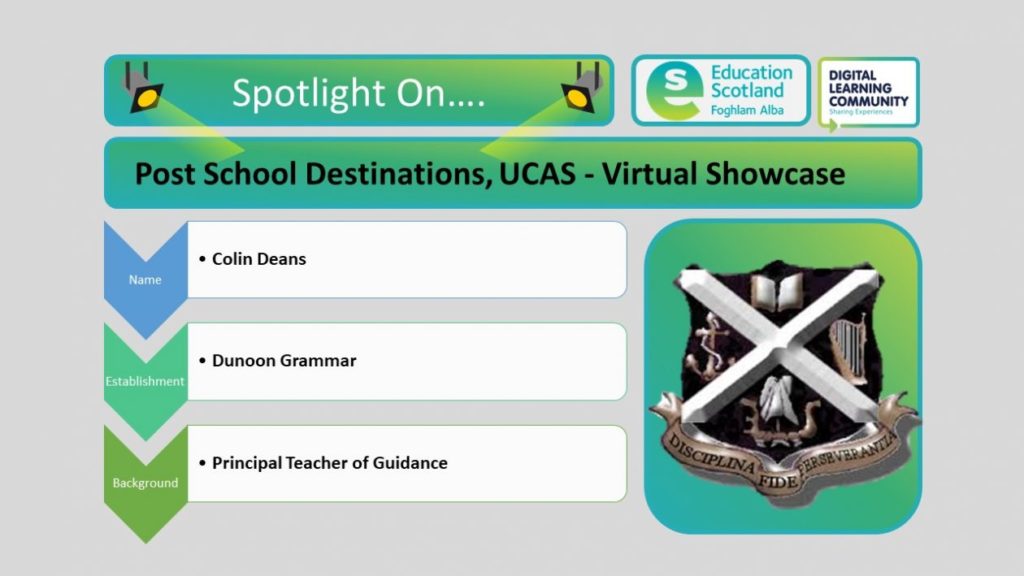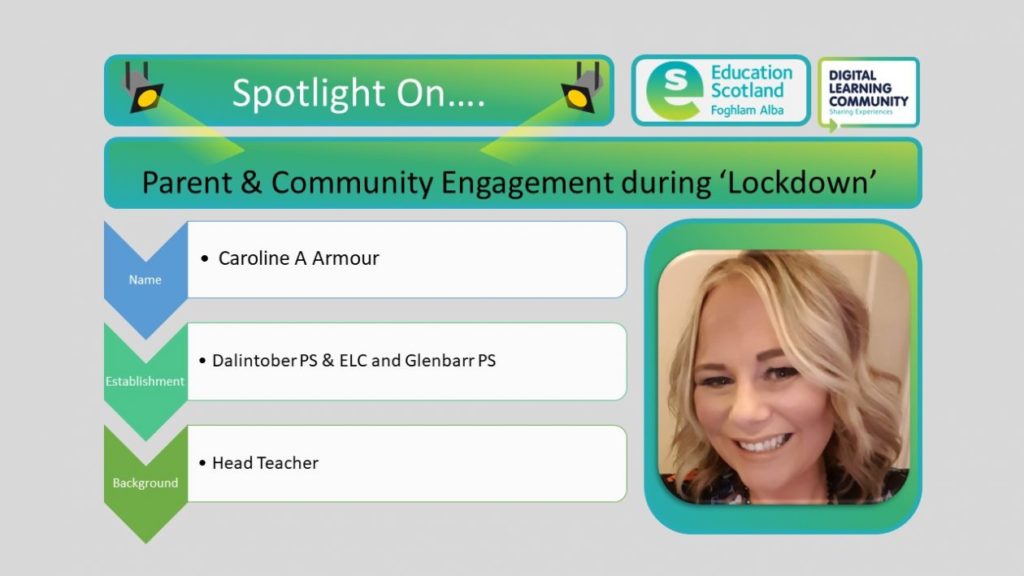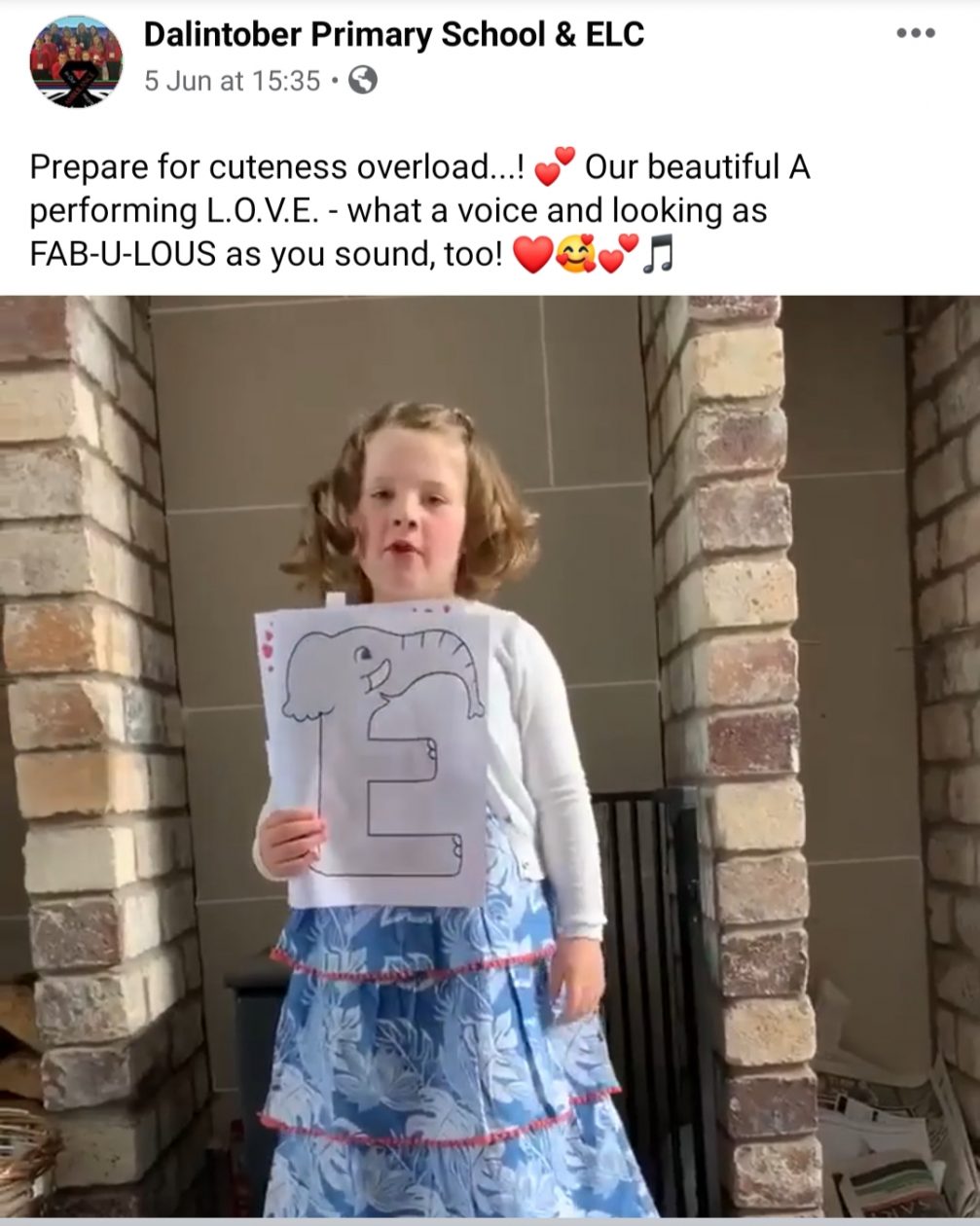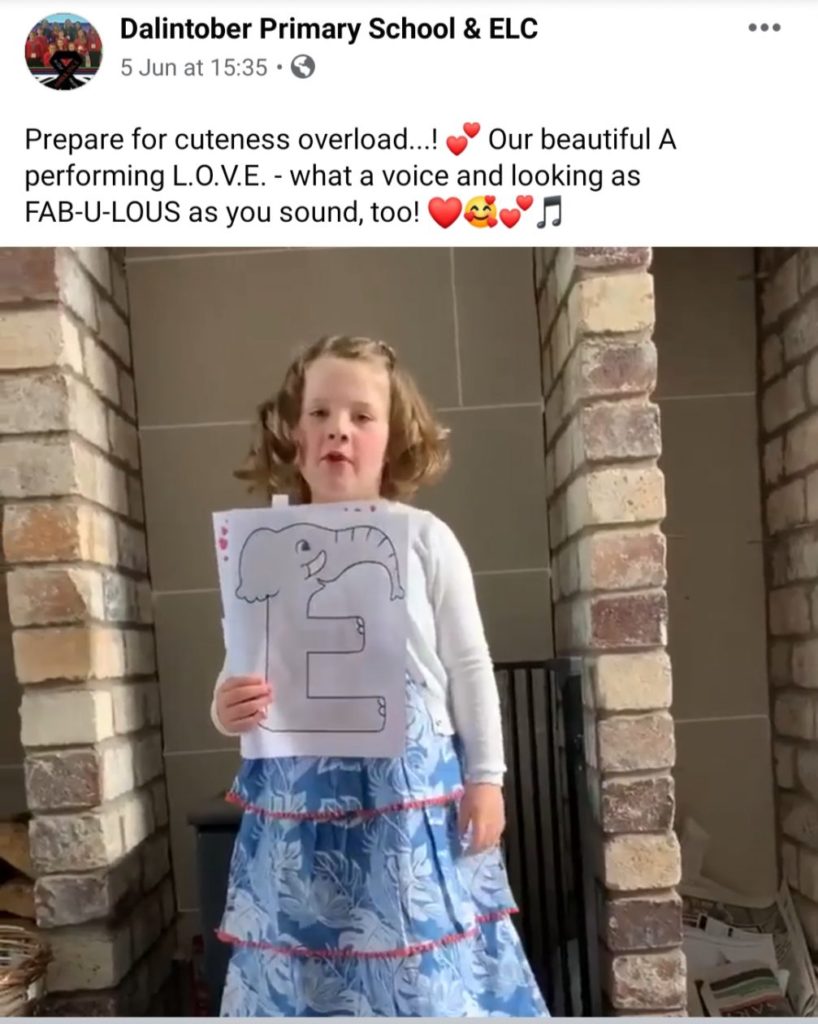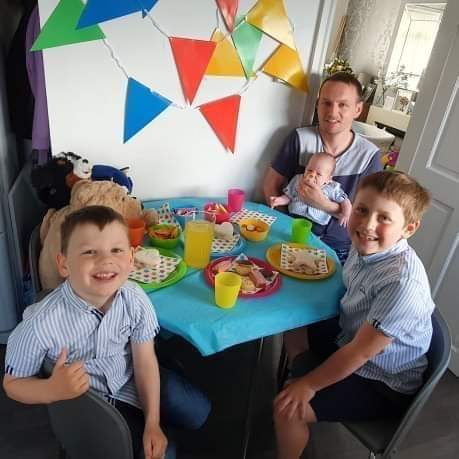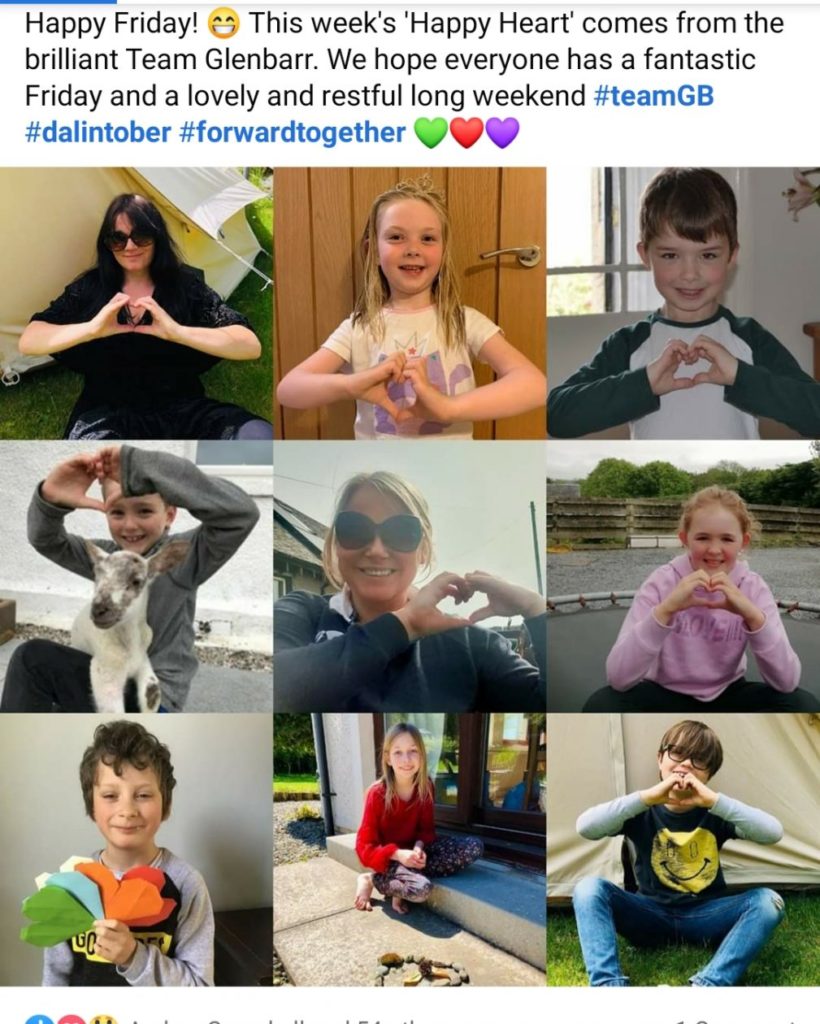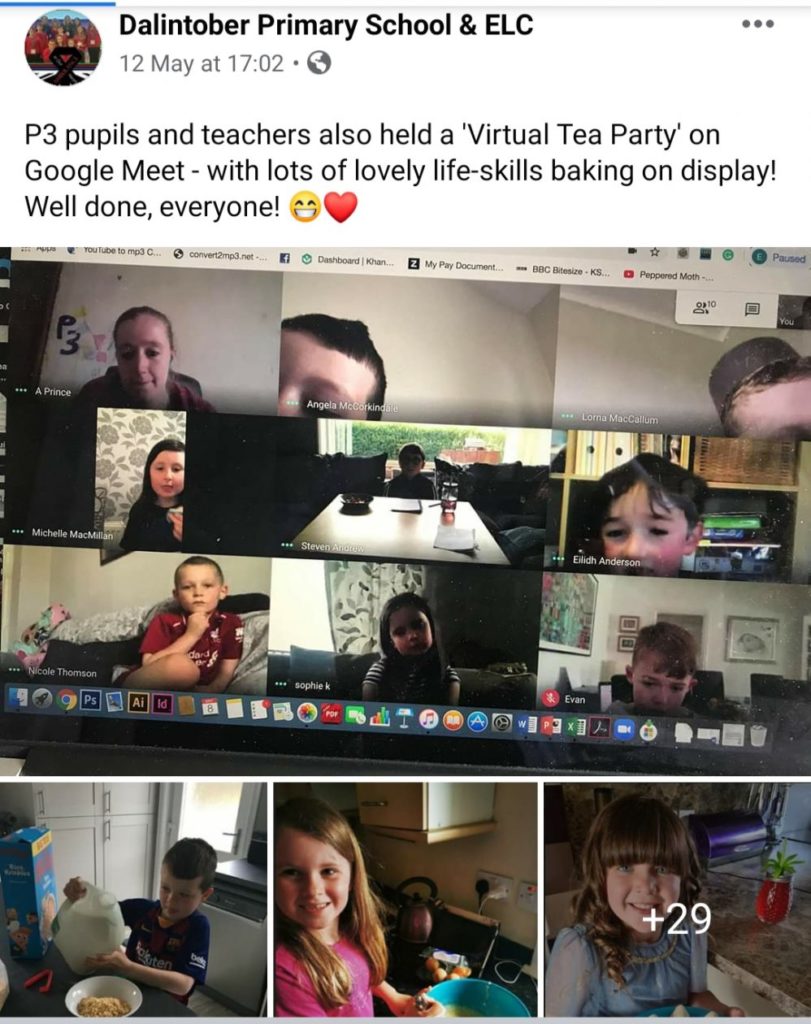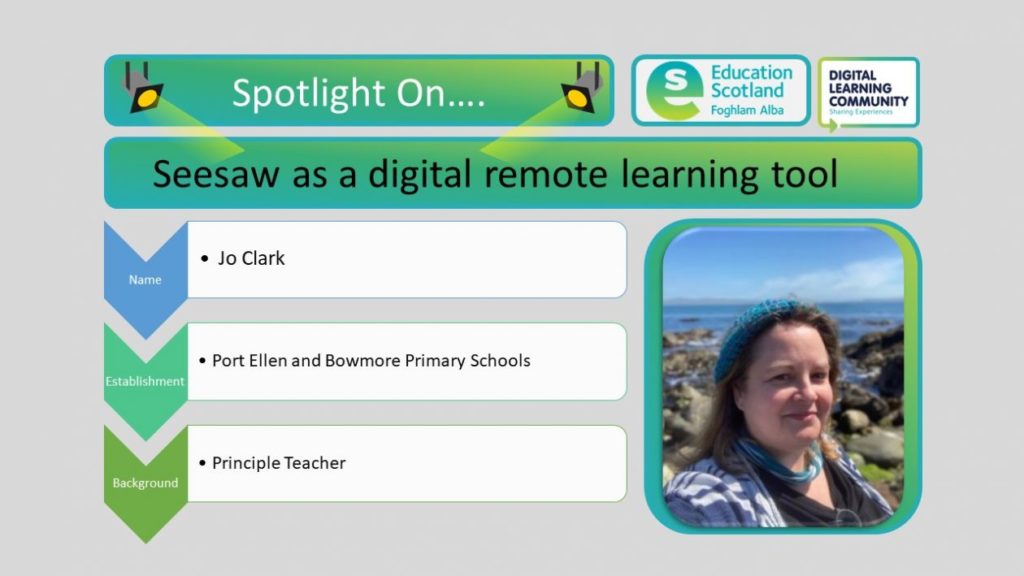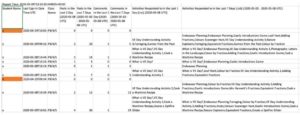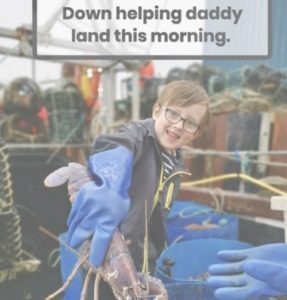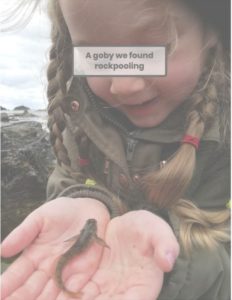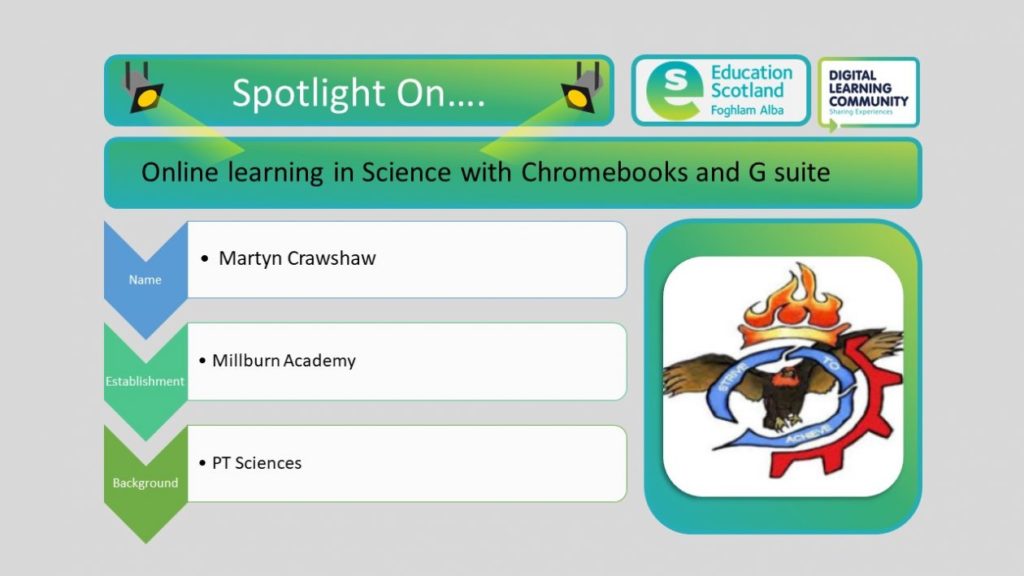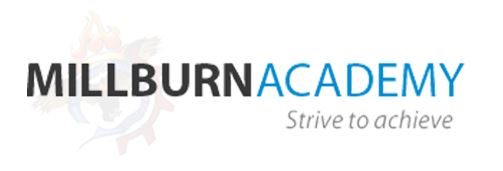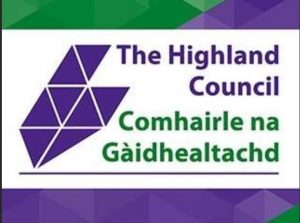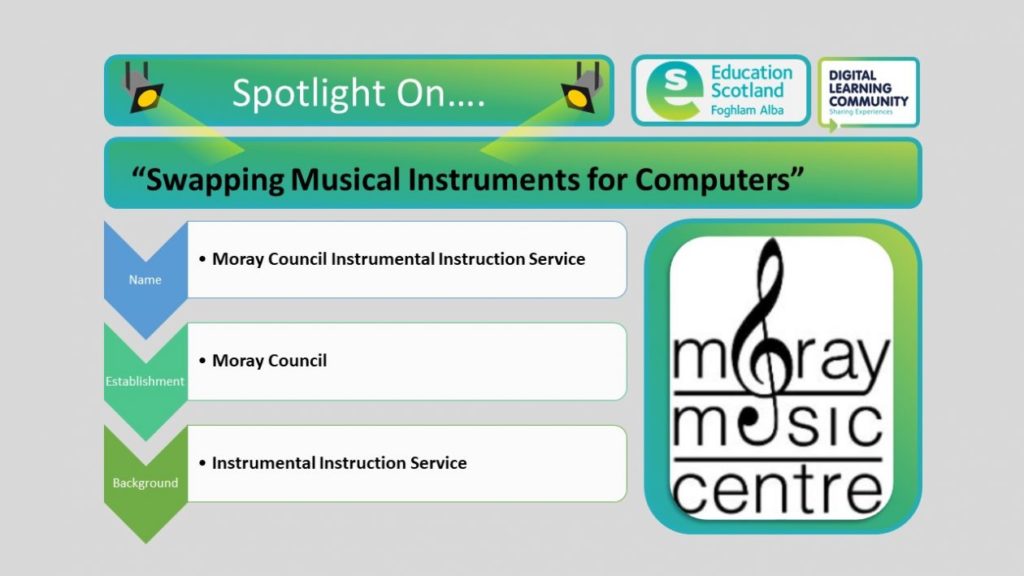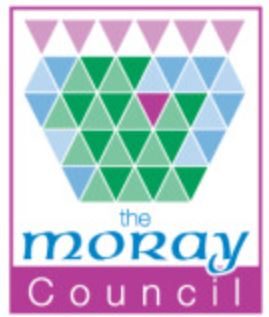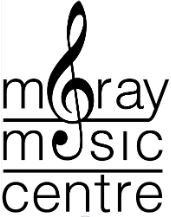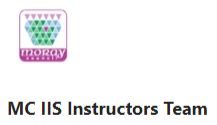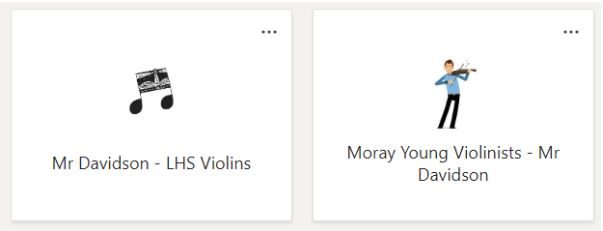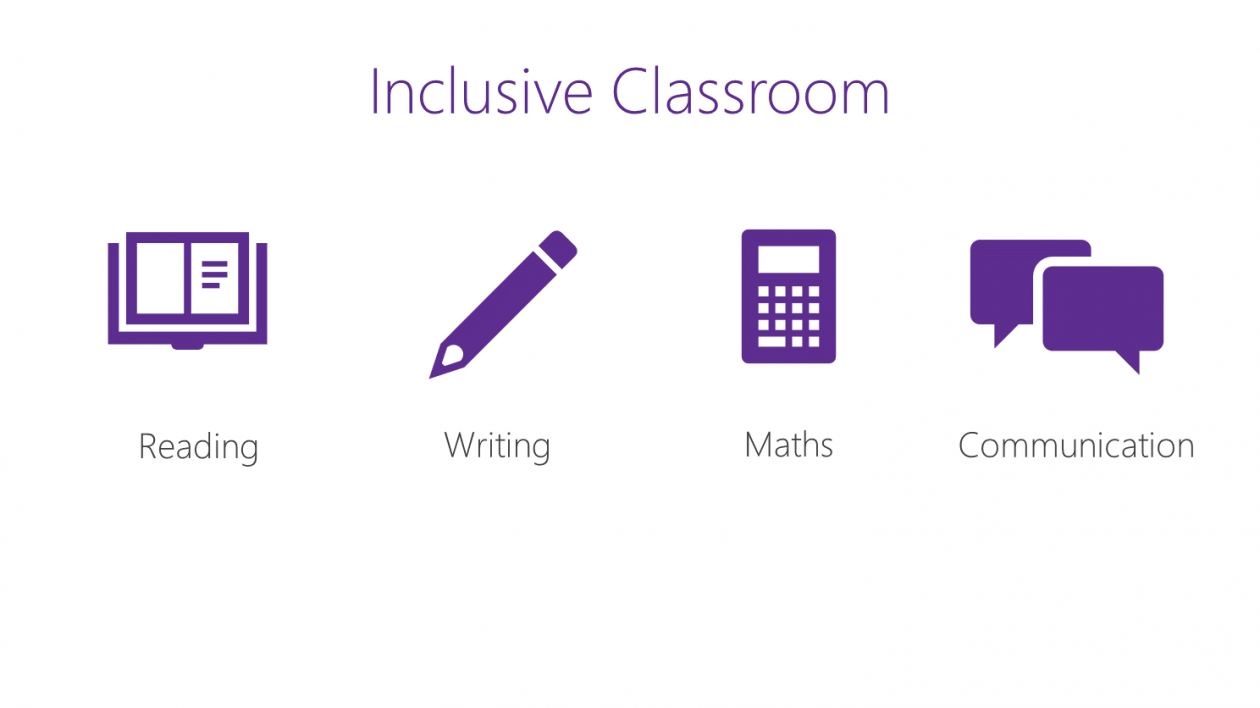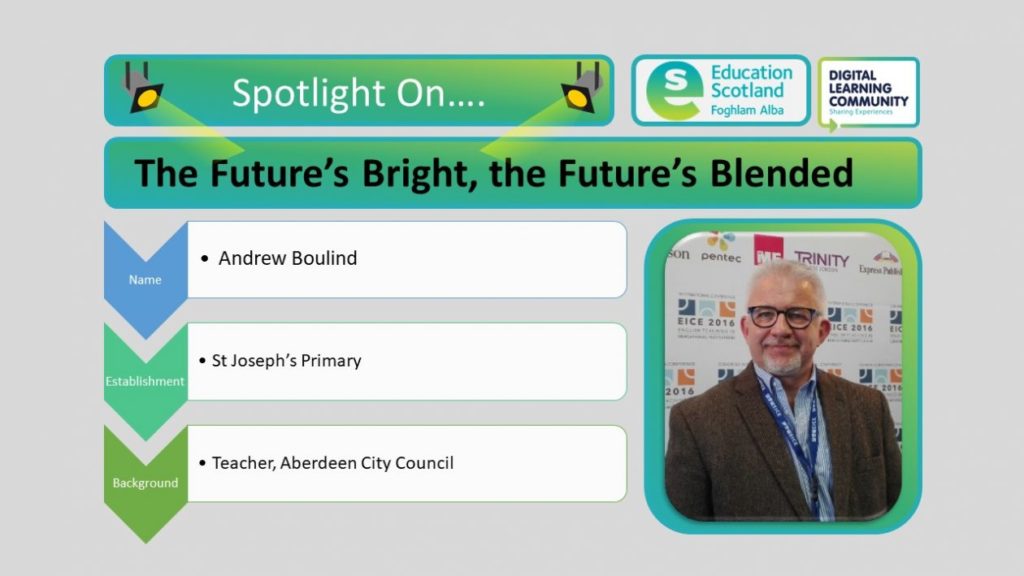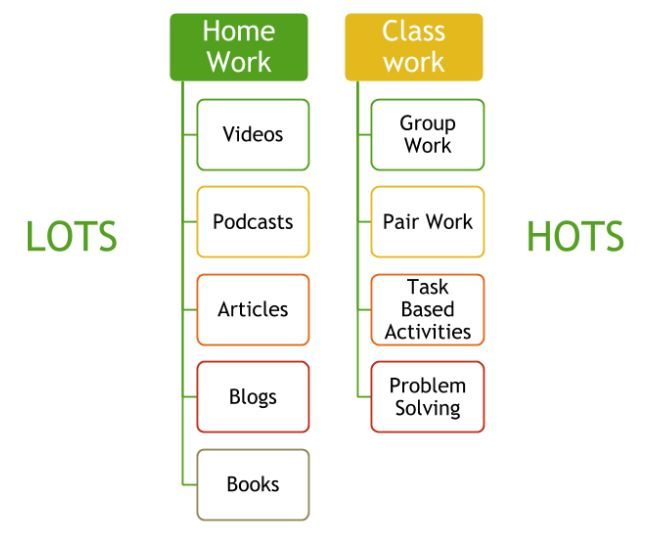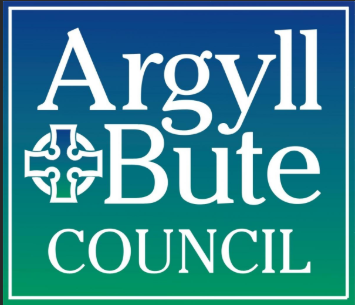
After receiving CLPL funding from the Education Scotland STEM Nation grant this year, training was offered across the Islay cluster in digital skills. One of the key developments implemented in Port Ellen and Bowmore primary was to train staff in the use of Seesaw as a digital PLP tool to replace cumbersome and time–consuming learning logs. Under a joint headship both schools decided to invest in the paid for Seesaw for school’s version of the App. This version allowed us to have continuity of progression throughout a child’s time in school and also to track the Es and Os across subjects with its skills tracking tool. It was great to be able to include video, audio and photos into a body of evidence for achievement across a level, as well as comments and feedback from teachers and students on their learning and next steps. And parents had access to their children’s learning through the family app and could leave comments as well.
Then Coronavirus happened and schools were going to close. We quickly handed out home learning codes to pupils and parents and got them to download the class app at home, enabling them to continue their learning remotely. Ipads were provided for families without technology. Suddenly Seesaw was not just a PLP, but a home learning tool, one that could be used by children from ELC to P7 to learn remotely.
Teachers from P1 up plan and provide a weekly grid of learning activities for pupils to work with that have a good balance across literacy, numeracy, health and wellbeing, STEAM and other curricular areas; the emphasis is on spending as much learning time offline as on a device, by taking advantage of our fantastic environment here on Islay. We have seen some examples of truly outstanding pupil learning happening at home and share it on our Twitter feeds. We even had a retweet from NASA for one of our rocket building STEAM activities!
Pupil engagement is something we have worked hard to maintain in the move to remote learning. One of the key benefits of Seesaw is the ability to track engagement across the school; school admins can access a spreadsheet each week that shows how often children have posted and which activities have been completed, so we can quickly identify children whose engagement suddenly falls off and intervene. Staff have regular Google Meet discussions where they share their personal success stories with engagement; we quickly realised that regular video messages from teachers and audio feedback helped engagement- one parent said it was like having the teacher in their home. This is particularly successful with early years. Staff have also developed their digital skills to improve engagement, with some creating virtual Classrooms using Google slides and personalised Bitmojis. Here children can click on items in the class to link them to a video message from their teacher, a learning activity, video or document online. We have also used physical means to engage; early years sent sunflower seeds through the post for their children to plant. Finally, we share successful learning stories that aim to inspire other learners through shared Seesaw posts to all the students and parents, Seesaw blogs and Twitter.
When there are issues with engagement, we have implemented a variety of measures to help. We send encouraging messages to parents and pupils, have made phone calls home and have provided Ipads and dongles where needed so access is not a barrier. For some parents physical materials in the form of textbooks and worksheets have provided extra support that makes them less anxious. One of our key aims once schools are back is to find a way to provide more extensive training for parents so they are more confident in what will be a model of blended learning. All of the school community are glad that we chose to implement Seesaw in schools before the crisis, a versatile tool that has helped us continue to engage children and support them and their families at this time.
Interactive virtual class
https://docs.google.com/presentation/d/1uisENFphlYhyKGamrhIgGwML7siqRjPBBOhv9uFZyos/edit?usp=sharing
Screenshot of engagement spreadsheet.
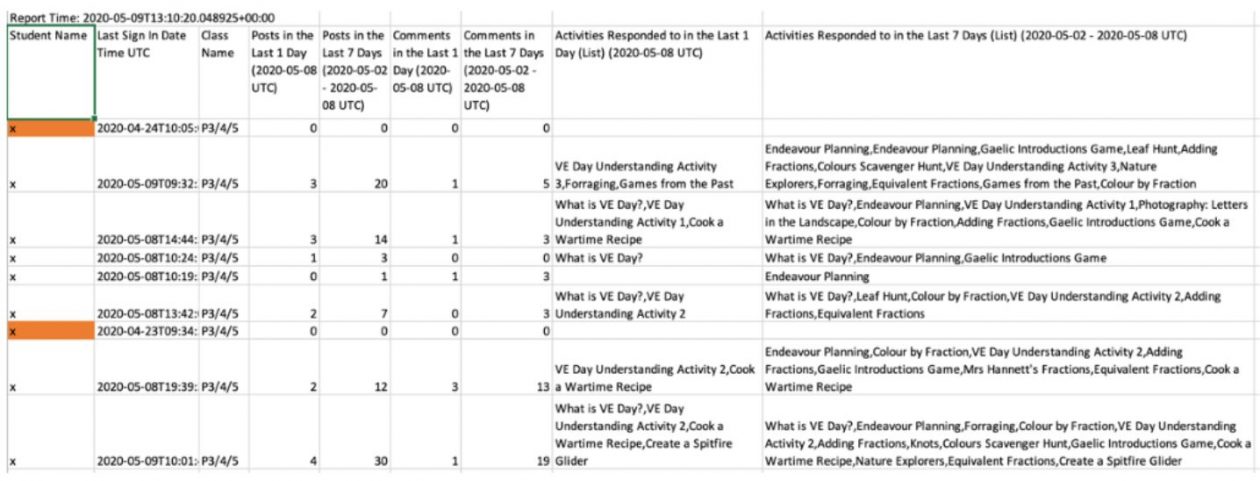
PORT ELLEN TWEETS
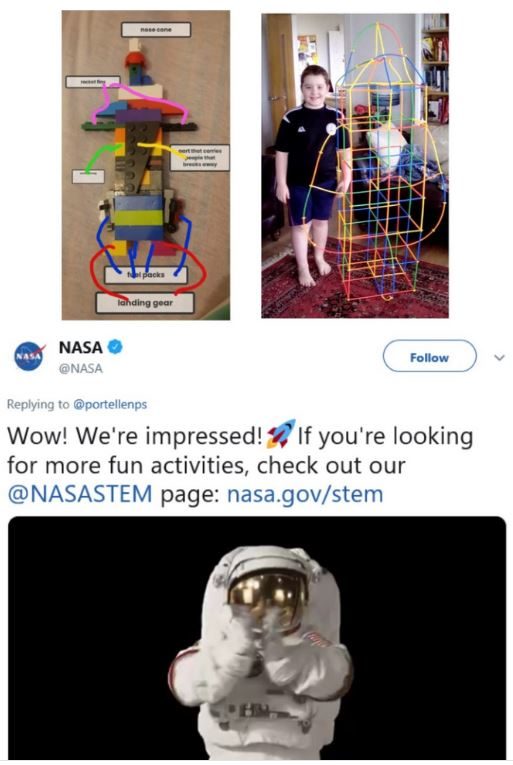 Link to tweet about our use of emotionworks.
Link to tweet about our use of emotionworks.
https://twitter.com/portellenps/status/1265642824894160897?s=20
Link to video about making bread
https://app.seesaw.me/pages/shared_item?item_id=item.09f3cac7-edbe-4d77-836b-5bd087100dd9&share_token=GaseIiBmRKC4jIP4r4sbrg&mode=share
link to giant bubbles tweet with vid
https://twitter.com/portellenps/status/1253683989375856640?s=20
Link to weather forecast in Gaelic, retweeted by Sean Batty
https://twitter.com/SeanBattySTV/status/1245393179190362118?s=20
Creepy crawly maths tweet
https://twitter.com/portellenps/status/1254869348121968640?s=20
SEESAW POSTS
Early Years Port Ellen https://app.seesaw.me/pages/shared_item?item_id=item.b4db51f6-b272-4a88-bcb2-69b3df1ee286&share_token=bAIge6d0RtiLUIa2Rc67KQ&mode=share
Early years Bowmore https://app.seesaw.me/pages/shared_item?item_id=item.628ef661-43d6-4ddd-be57-f379fe71325d&share_token=mBn8pKlaS0m33qek10iAYQ&mode=share
BOWMORE TWEETS
Teddy bears picnic
https://twitter.com/BowmorePrimary/status/1265949410602766337?s=20
Sharing music talent
https://twitter.com/BowmorePrimary/status/1261316232634150912?s=20
Evaluating parachute video clip
https://twitter.com/BowmorePrimary/status/1261271607827447809?s=20
Gaelic 1-3 birdwatching
https://twitter.com/BowmorePrimary/status/1259770971306823682?s=20
Japanese art
https://twitter.com/BowmorePrimary/status/1258711972390080512?s=20
 DGS Virtual University and College Showcase. On Wednesday 10th June, 15 Universities, Colleges and Organisations from across Scotland delivered virtual presentations with q&a’s to young people and families across Argyll & Bute. This was done in 1/2 hour slots throughout the day via 6 digital platforms; MicrosoftTeams, Adobe Connect, Zoom, Blackboard, WebEx and Youtube. Pupils were added to a Google Classroom via their Glow accounts where they could access the links as well as other valuable information regarding UCAS. For families or recent school leavers who didn’t have access to Glow, we made the links available on our school website. We used our school and Skills Development Scotland social media platforms to promote the event. For a number of sessions, we had over 90 participants which was a fantastic level of engagement from the young people of Argyll & Bute. We had double figures engagement for every session, averaging 50-60 participants. A number of institutions recognised that we were the first school in Scotland to enquire about a Virtual Showcase to school pupils, something that many of the Universities and Colleges had never done before. The day ran extremely smoothly, with every session being successfully delivered via their technologies and chosen platforms. A number also agreed to record their sessions and allow us to post in our Google classroom for regular access. Institutions who could not deliver on the day, have contacted us and sent over recordings which we again can publish. Overall, it was a fantastic experience the see the extremely high level of engagement from young people in an authority that covers a large geographical area connect with so many Universities, Colleges and Organisations that wouldn’t be able to deliver in the current climate face to face. Through technology, we were able to deliver our originally planned physical showcase in the school building and deliver it on a larger scale with increased levels of engagement from young people and institutions.
DGS Virtual University and College Showcase. On Wednesday 10th June, 15 Universities, Colleges and Organisations from across Scotland delivered virtual presentations with q&a’s to young people and families across Argyll & Bute. This was done in 1/2 hour slots throughout the day via 6 digital platforms; MicrosoftTeams, Adobe Connect, Zoom, Blackboard, WebEx and Youtube. Pupils were added to a Google Classroom via their Glow accounts where they could access the links as well as other valuable information regarding UCAS. For families or recent school leavers who didn’t have access to Glow, we made the links available on our school website. We used our school and Skills Development Scotland social media platforms to promote the event. For a number of sessions, we had over 90 participants which was a fantastic level of engagement from the young people of Argyll & Bute. We had double figures engagement for every session, averaging 50-60 participants. A number of institutions recognised that we were the first school in Scotland to enquire about a Virtual Showcase to school pupils, something that many of the Universities and Colleges had never done before. The day ran extremely smoothly, with every session being successfully delivered via their technologies and chosen platforms. A number also agreed to record their sessions and allow us to post in our Google classroom for regular access. Institutions who could not deliver on the day, have contacted us and sent over recordings which we again can publish. Overall, it was a fantastic experience the see the extremely high level of engagement from young people in an authority that covers a large geographical area connect with so many Universities, Colleges and Organisations that wouldn’t be able to deliver in the current climate face to face. Through technology, we were able to deliver our originally planned physical showcase in the school building and deliver it on a larger scale with increased levels of engagement from young people and institutions.